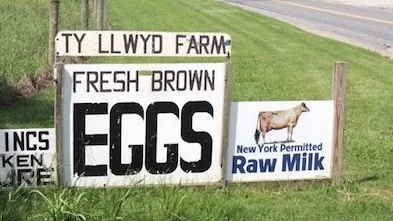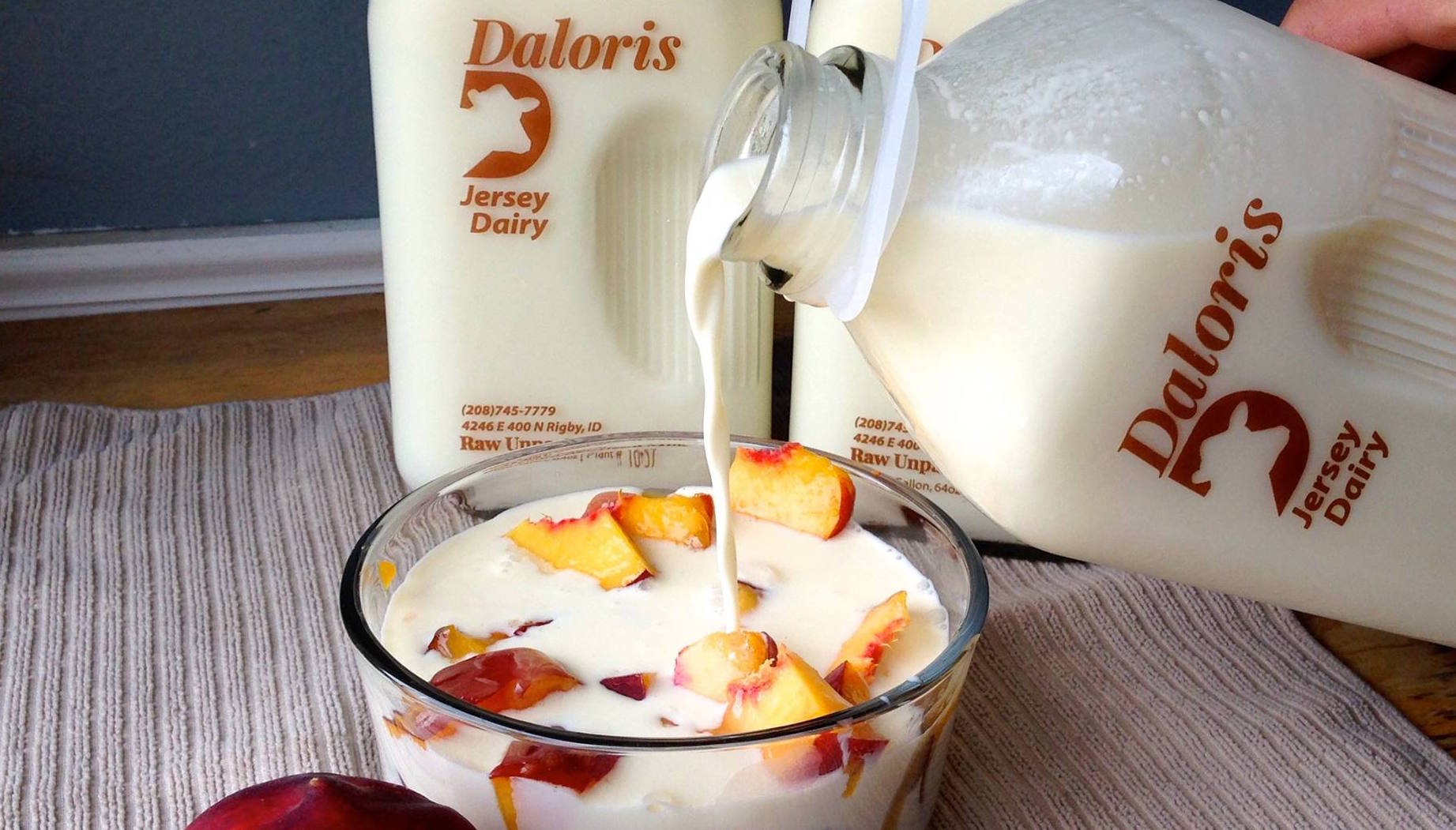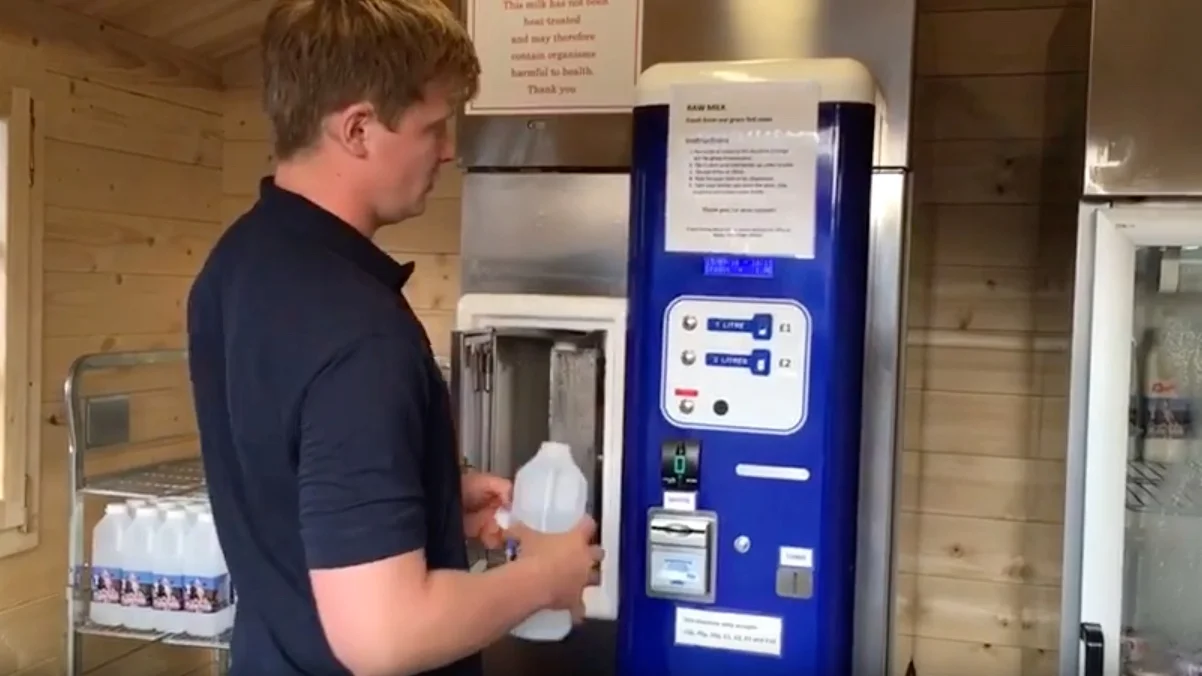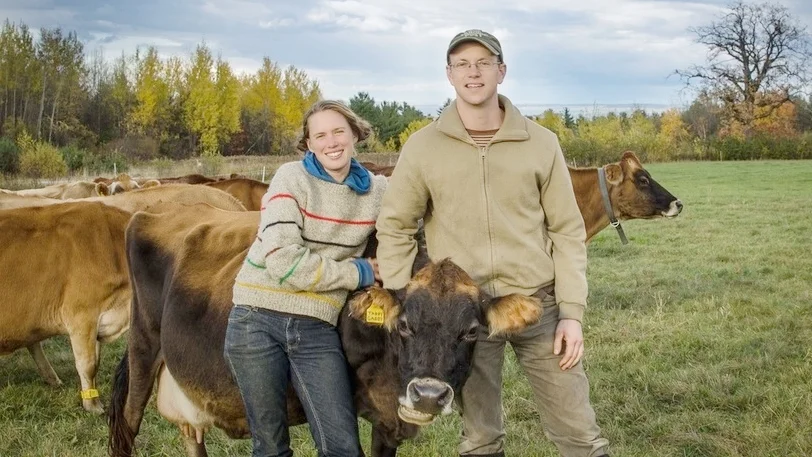Dairy farmers producing for the industrial market may already be experienced with food safety plans and other processes like SOPs. They may not find these out of the ordinary. It is also possible that farmers with no prior experience in commercial dairy farming may be interested in starting their own micro dairy. This information may help them to understand why it is important to have a Standard Operating Procedure document that increase food safety in place if you are producing raw milk for your local community. Please study the Risk Assessment Management Plan first for an overview of this particular system. The Raw Milk Institute listed farmers have been using these management systems for up to ten years with a great track record of safety (example).
Producing raw cow's milk for human consumption is currently not allowed in Australia, unless you own the animal but that does not prevent farmers from becoming acquainted with these effective management systems that can be
complementary to a raw dairy operation. Regulated raw goat milk is allowed in four Australian states though.
ARMM wants farmers to be prepared for the day media censorship on raw milk from cows ends, and the journey of national discovery begins in earnest.
Please remember there are two kinds of raw milk: one produced for human consumption, and another intended to be pasteurised. ARMM advocates for a regulated raw milk from cows industry in Australia. A regulated industry will require that dairy farmers take the extra care and do the required testing for food safety. No food can be produced to be 100% safe, but a low-risk raw dairy product is indeed achievable, as experience shows. Strong consumer demand for raw dairy also demand that farmers be equipped with this information. It’s the responsible way forward.
What are Standard Sanitary Operating Procedures?
The Raw Milk Institute calls them Standard Sanitary Operating Procedures. A SSOP document can contain a variety of goals or tasks that require written steps to be completed. It is like a recipe. It is a step-by-step guide to completing a task to get the same foreseeable results every time. Procedures and policies are two words can be used interchangeably.
The purpose is to provide enough detail so employees can perform the routine tasks correctly. They should be able to read and follow the procedure without being given additional instruction. The SSOPs can result in uniformity of performance where different people perform the same job. It can also lead to reduction or elimination of grey-areas and miscommunication. It can be seen as a reference system or an operating manual. The SSOPs are expressed in great detail in a separate Word document and accompanies the Risk Assessment Management Plan (a food safety plan).
As an example, here are a few tasks that require a series of actions, taken from this RAWMI example:
procedure for assuring clean, sanitary grazing, resting, lounging conditions for cows
procedure to assure clean walkways for when the cows come in for milking each day
procedure to assure cows have abundant supply of clean, fresh water
procedure during milking to prevent bacterial contamination
procedure during milk bottling to avoid bacterial contamination
procedure to clean up after different processes; such as after milking and after bottling
The benefits of having SOPs
SOPs are one of the foundational stones of the raw dairy business. If your business have poor foundations you’ll be running into problems rather quickly. You won’t be prepared for the storms of public and media scrutiny that can occur. These are best avoided by doing a lot of careful planning and premeditated risk reduction. Poorly written SOPs can be an unnecessary risk. Without appropriate SOPs you may be prevented from growing your business because the foundation is too weak.
If a business has strong foundations it can grow and move into the future.
It is possible for someone who started with a micro dairy, to safely grow their business in a few years to a large herd, when done correctly. This can be achieved by monitoring, re-evaluating and then
expanding food safety plans and other supporting documentation with the appropriate elements. Running a large raw dairy is quite an achievement because it requires keeping your finger on the pulse of every aspect of the operation. It always has a very well oiled system behind it. At the moment the largest raw dairy producer in the U.S.A. has a milking herd of 500 cows. Not everyone producing raw dairy has such lofty goals though. Many are satisfied with staying small or growing slowly. Producing for the raw milk market is a big responsibility and not everyone wants to care for and milk a large herd. The larger the operation, the higher the risks, but these can be successfully mitigated with appropriate management and experience.
No matter the herd size all farmers can benefit from studying RAWMI's farmer-friendly and humanitarian systems.
Writing effective SOPs
There is a variety of free videos and other resources on the internet to help small businesses to write their own SOPs. In this video senior consultant Oscar Combs walks people through the process of writing clear and effective SOPs. Oscar explains why they are the foundation of success and why employees need them. He helps medium to large companies to improve operations and reduce risks through their management systems.
“For me, it is important to understand that the SOPs are basically a way for us to capture our success and formulate a recipe that is strategic, repeatable and flexible.”
The Raw Milk Institute (RAWMI) display the food safety plans and SOPs of their listed farmers on their website. Every farm has unique documentation and they are good examples to the international raw milk community. RAWMI encourage the highest national and international safety standards but not the burdening of the farmer and employees with unnecessary or hard to understand rigmarole. RAWMI's transparency enables Australian farmers to look at their examples and write their own individualised, farmer-friendly ones with confidence.
According to RAWMI all of the plans of the listed farmers are posted publicly in order to educate fellow farmers.
Why do farmers need SOPs?
Consumers want farmers to produce a certain kind of product; low risk, pathogen-free raw drinking milk. To achieve this we need them to have the right ingredients to do this in a consistent way month to month, year to year.
SOPs allow the raw dairy business owner to put all of the elements needed in a format that is easy to understand. It makes it easier for new staff to learn and follow instructions as well. The employees are dependant on the knowledge of the farmer and his/her ability to pass that information on. Farmers should never expect new employees to know what they are doing. Producing raw milk for human consumption and producing for the industrial dairy market can be two very different activities. They have seperate values, expectations and outcomes. It is important to have documentation like SOPs printed out, laminated and stuck on a wall where staff can access them easily. Insert pictures if it enables you to better get information across. Create a manual if that works better. This can be done in a variety of formats but it should always be easy for everyone to access at all times. These SOPs make the process of delegation and entrusting staff with important tasks easier. The business is easier to manage. It is also important to periodically re-evaluate if your processes are still best practise for your operation or not. A new version of the old SOP document can be made
and distributed easily. Keep a notice board where you can notify employees of any important changes. Oscar Combs says:
"We want the running of the business to be predictable, streamlined and successful."
SOPs are sets of standards and when followed correctly it reduces errors. The process of writing SOPs captures and documents:
the how to
the when
the what if
the who is responsible
the how long they should do it
on the individual farm. Remember that Mark McAfee recommends saving documents in versions with dates on them (more here). This enables the farmer to go back and review earlier versions if need be. It also makes failures easier to diagnose and remedy. It benefits everybody; the farmer, the employees, the consumer, food safety auditors etc.
SOPs can be a great tool on the farm. Consumers are counting on farmers to stay in business and produce the raw milk they need for their families. We need farmers to become good, responsible business owners.
Good SOPs in action
With effective documentation in place, it is easier for someone to step in and take charge in times of an emergency, illness or when a key member of staff need to take urgent leave. You cannot ask cows to stop producing milk. It must be done. When processes are in place and repeated business success occurs, this enables the dairy
farmer and staff to go on the occstional much deserved holiday. If you manage your raw dairy business well, it is possible to enjoy this rare luxury. Oscar Combs calls this the ‘organisational knowledge’. He says that when this knowledge is captured, it can serve the business owner very well, in a variety of ways.
Misconceptions
At the 11 minute time marker of the video mentioned before, Oscar Combs says that some people think SOPs will slow the business down or stifle creativity. He says the opposite is true; having SOPs give us the foundation for creativity. “SOPs are living documents. They should be revised. If you want to have a new strategic direction in the company we now have a foundation (from which to grow).” It will not slow your business down.
Some farmers believe that they do not need SOPs because they are flying solo. This is a myth. SOPs help farmers to wrap their heads around a lot of different aspects. SOPs are especially useful for those processes that the farmer only do from time to time. Sometimes a dairy farmer need to be reacquainted with particular steps and then SOPs can save valuable time and energy.
Having SOPs also shows that you take your business serious. This can help to earn the trust of food safety auditors.
They won’t bother you so much when they see that you know what you are doing and can take ownership of your processes. They can respect farmers who work to increase food safety and speak 'their language' of risk identification and risk reduction.
Farmer-friendly advice
Some people may see SOPs as a chore, whether it is writing them or following them. Yes, they are a chore but simplifying these chores can save everyone a lot of frustration. Don’t overcomplicate things when writing SOPs.
A good SOP is an investment.
If you do not have the skills to write them, be honest with yourself and find someone who can help you. If you are not skilled with a computer, find someone else who is.
It can be very helpful for the farmer to use a smartphone to make a voice recording. They can walk through the dairy with the recording device and record themselves describing the different steps. Later they can hand it over to someone else who can transfer the information to the computer. There is always a way to make things easier. Just be creative.
Remember that even after a farmer has completed a food safety plan, a SSOP and CCP document, these still need to be looked over by a food safety expert or a panel of experts. Farmers in the process of becoming RAWMI-listed go through a revision with the RAWMI board. Learn more about the process here.
Entrepreneurship
Becoming a raw dairy farmer means becoming an entrepreneur. It means taking control and responsibility for your own business and your own destiny. When you get the opportunity to have a go at it, do it wisely with these systems in place.
Also see the following two pages:
Risk Assessment Management Plan
Risk Identification and Risk Reduction
Questions to ask in the process of writing SSOPs:
It is important to remember that the main reason for doing all this work is to REDUCE RISK. Farmers need to think about the unique circumstances on their farm and how it can be a risk to their business if they don't put procedures, steps or instructions in writing for employees to follow.
Ask yourself the following questions with every task. It can be a great way to avoid missing important details:
How frequently does this procedure need to be done in order to complete the task? Is it a weekly chore?
What does this procedure apply to? For example: does this apply to all the water troughs or only those in a certain area?
What equipment are needed to complete this procedure?
If certain tools are not in the immediate vicinity, where can the they be found?
Is there a specific person who is responsible for a high risk procedure? Specify if this is the case.
Are there risks involved and what level of risk? Most steps are routine responsibilities and do not involve much risk, but if a certain step is high risk, emphasise it. Write it in bold or italics.
How can contamination be avoided while performing a specific high risk step? Specify briefly.
What kind of tasks need documenting on the farm?
- Procedures to assure cows have clean, fresh water
This is an example of a routine procedure that has to be done frequently (perhaps daily in warm weather). It involves steps and instructions of what need to be done to ensure the water the cows drink is clean and fresh. Does the water trough need a bit of scrubbing before it is drained? Where are the brushes kept? Cows need fresh, disease-free water to produce disease-free milk.
- Procedure to assure clean walkways before cows come in for milking
How do you keep the holding area clean? Do you need to write a procedure for it? Where can you find the equipment needed? How often is this done? Don't assume that people will know that this has to be done every day, specify how regularly this has to be done.
- Procedures before milking
Many things need to be sanitised in this procedure. The farmer need to put on clean gear and the milking claw need to be submerged in a bucket of disinfectant water. Some equipment have to prepared before the system is switched on. List them all as if you were explaining it to a new employee who have never been on the farm.
- Procedure to prevent bacterial contamination during milking
This may be one of the longest procedures on your SSOP document. It usually contains many steps and specific instructions. The experienced dairy farmer can simply write down how they usually perform this task and then compare it to the many examples available and update it. This may enable the farmer to identify the additional care needed for this procedure when producing for the raw dairy market. There are many good examples that can be studied. See RAWMI-listed farmers' SSOPs as examples and the Risk Identification and Risk Reduction Program's Milking Conditions risk category:
- Procedure to clean up after milking
Milking claws need to be submerged in a bucket of disinfectant water again and a series of steps to clean the equipment follows.
- Procedure to prevent bacterial contamination during bottling of milk
This is another procedure that can be quite long and detailed with a lot of emphasis on risk. Employees can be a great risk to an operation and it is important to write your SSOP procedures so they become a tool to achieve excellence. Make sure you instruct them to wash their hands appropriately, to always wear clean, freshly laundered clothing and to take measures to keep long hair out of the way by wearing a hairnet. Instruct them on good hygiene measures. Performing certain tasks before coming in to do milk bottling are high risk. The bottling crew must not handle chickens, chicken feed, eggs, meat or even calves kept separately before coming in to perform their duties. They should always arrive wearing clean, freshly laundered clothes and don the appropriate boots, coats, hairnet and gloves.
- Procedure to clean up after bottling
Equipment have to be properly sanitised. Include instructions on how to disassemble certain equipment. Remember to include brief instructions on how to operate certain equipment, like the bottle washer for example. Include instructions for what to do with the coats and boots when the work is done.
Do not worry too much about explaining all the risks in your SSOP procedures. Risks are detailed in the Risk Assessment Management Plan.
Different formats of SSOPs
There are a number of ways in which these procedures can be structured. The best format is creating a text SSOP document on the computer on software like Microsoft Word because it makes it easier for food safety experts and new employees to have all the information together. A text document is the easiest format because SSOPs do become outdated. It is easy to amend, add new steps, keep up to date, print and share.
Here are a few different options:
You can print out and laminate the SSOP document and stick the pages on a wall in the milking room.
You can include pictures in the text document to make it easier for some employees to understand and follow.
You can print out and stick instructions of how to use a particular type of machinery, either on it or next to it (if appropriate). It saves new employees the time and trouble of moving away from their work to study a manual.
You can create a manual or handbook.
You can create a video or an audio clip that is easily accessible for employees. Organic Pastures dairy have a series of videos to help employees that work away from the farm, click here. The video about the creamery/breakroom is a very good example, watch it here.
For more information on how to identify and reduce the unique risks on the individual farm and write your own food safety plan for future use when raw milk from cows are legalised in Australia see the link below. It may also help conventional dairy farmers become acquainted with how huge the difference between systems producing raw milk for the pasteuriser, and raw milk produced in regulated systems, can be.







































